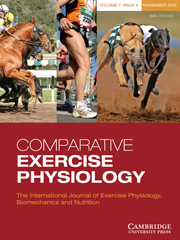Article contents
The acute effects of arm ergometry on affect
Published online by Cambridge University Press: 10 January 2011
Abstract
The primary purpose of this study was to test the predictions of the dual-mode model using arm ergometry as the exercise modality. It was hypothesized that changes in affect during exercise would be greater in high (105% VT)- and low (80% VT)-intensity exercise conditions than in a control condition, while differences in affect would be observed between exercise conditions. Study participants were 24 physically active men. A within-subjects design was used. Affect was measured using the Activation–Deactivation Adjective Check List and the State Anxiety Inventory. Cognitive (i.e. self-efficacy and enjoyment) and physiological (i.e. heart rate, pain and perceived exertion) mediators of the exercise–affect relationship were also examined. Results showed that during exercise, changes in affect were greater in the exercise conditions than the control condition, and affective valence in the exercise conditions declined relative to the control condition. In partial support of the dual-mode model, self-efficacy mediated the relationship between below-VT exercise and affect, whereas pain mediated the relationship between above-VT exercise and affect. These findings highlight the importance of exercise intensity to the affective benefits of exercise.
- Type
- Research Paper
- Information
- Copyright
- Copyright © Cambridge University Press 2011
References
- 1
- Cited by


